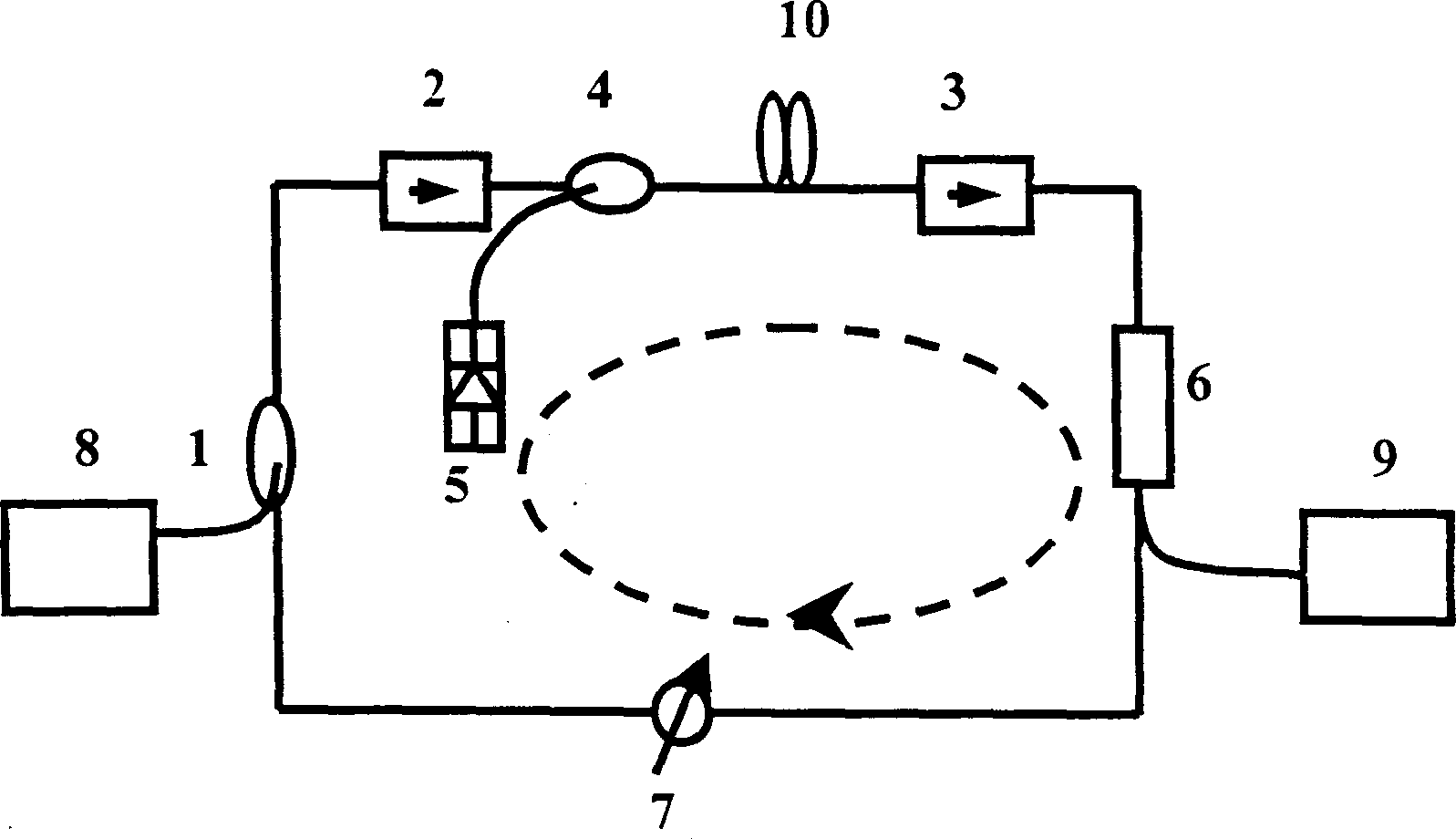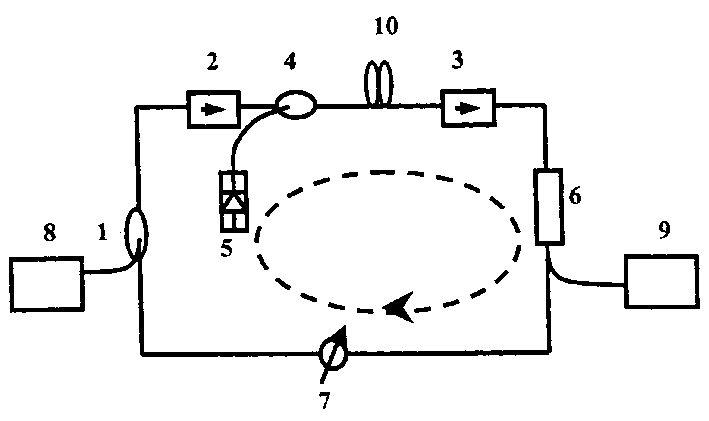Low noise index gain blocked erbium-doped amplifier
An erbium-doped fiber, gain-clamping technology, applied in the field of optical communication, can solve problems such as low noise figure
- Summary
- Abstract
- Description
- Claims
- Application Information
AI Technical Summary
Problems solved by technology
Method used
Image
Examples
Embodiment 1
[0019]A 50:50 optical coupler is used to couple the single-wavelength tunable light source and the multi-wavelength high-stable laser source together as the input signal source of the amplifier. First, 1554.97nm signal light is selected as the reference signal light. During the measurement process, adjust the two lasers to ensure that the input power of the 1554.97nm signal light at the output port of the 50:50 optical coupler remains -20dBm. Measurements of the single-wavelength amplified signal were performed with the multi-wavelength laser turned off. When the cavity loss is 16dB, the output powers of 1554.97nm signal light under multi-channel and single-channel input conditions are respectively -7.60dBm and -7.30dBm. Through this experiment, it can be concluded that under two different input conditions, the gain difference of the same signal light is negligible, and it also shows that in the amplifier of the present invention, when the cavity loss is 16dB, no matter how m...
Embodiment 2
[0021] In order to demonstrate the gain locking characteristics of the amplifier of the present invention under different input powers, it is necessary to measure the gain-input signal power variation relationship under single-channel and multi-channel input conditions. Among them, the common amplifier is the amplifier without the ring cavity. In the experiment, only 1546.92nm signal light is considered, because its power is the strongest in the output spectrum of the highly stable multi-wavelength laser source, and it can be output from the even-numbered end of the wavelength interleaver. In traditional amplifiers, the relationship between gain and input signal power is basically the same under single-wavelength and multi-wavelength input conditions, that is, the gain attenuates with the increase of input signal power, and the gain of 1546.920nm wavelength decreases by about 3dB when the input channel increases. Therefore, the traditional EDFA obviously cannot meet the requir...
Embodiment 3
[0023] The experiment also shows the relationship between the gain and noise figure of the 1546.92nm signal light and the change of the input signal power under different cavity losses. Ordinary EDFA (can be regarded as a gain-clamped EDFA whose cavity loss is infinite) has a gain and noise figure of 28dB and 6.4dB respectively under small-signal input conditions. They both decay as the input signal power increases. In the gain-clamped EDFA, when the cavity loss is 24dB and 18dB, the input signal power is in the range of -32dBm to -10dBm, and the gain is locked to 17.8dB and 14dB respectively. Both the gain and the size of the dynamic gain-clamping region (the region where the gain remains stable as the input power varies) vary with cavity loss. As the cavity loss decreases, the gain becomes smaller and the dynamic gain clamping region becomes longer. When the cavity loss is infinite, 24dB and 18dB, the noise figures are 6.4dB, 5.8dB and 4.2dB respectively. The reason why t...
PUM
 Login to View More
Login to View More Abstract
Description
Claims
Application Information
 Login to View More
Login to View More - Generate Ideas
- Intellectual Property
- Life Sciences
- Materials
- Tech Scout
- Unparalleled Data Quality
- Higher Quality Content
- 60% Fewer Hallucinations
Browse by: Latest US Patents, China's latest patents, Technical Efficacy Thesaurus, Application Domain, Technology Topic, Popular Technical Reports.
© 2025 PatSnap. All rights reserved.Legal|Privacy policy|Modern Slavery Act Transparency Statement|Sitemap|About US| Contact US: help@patsnap.com


